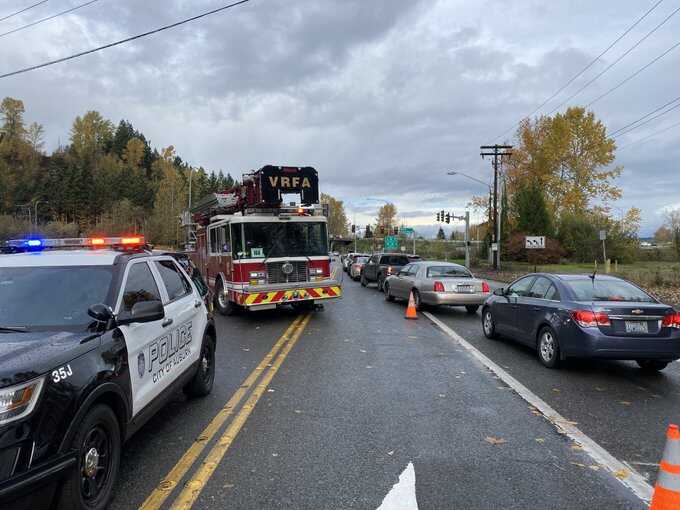Why Firefighters block multiple lanes for vehicle collisions
Vehicle collisions are on the rise in our area. The delays these incidents cause can be very frustrating. As you pass by the scene, you might wonder why emergency vehicles are blocking so many lanes, causing an even bigger traffic backup.
Why do we block so many lanes when responding to vehicle collisions?
Roads, highways, and freeways are some of the most dangerous work environments for first responders. Every day first responders experience close calls from distracted, aggressive, and impaired drivers while responding to roadside emergencies. In 2019, a vehicle crashed into the back of a VRFA fire engine at a collision scene on Highway 167. Because firefighters had taken the proper steps to protect the scene, no one was injured.
What can you expect when approaching a collision scene?
When the first emergency vehicle arrives, the driver will park it at a 45-degree angle across a lane or lanes upstream of traffic. Parking at an angle makes it easier for approaching traffic to identify a stopped emergency vehicle. The second emergency vehicle will park just in front of the first emergency vehicle parallel to the work area providing further protection for first responders and patients. You may also see cones, flares, and other visual stimuli used to ensure you have time to slow down and change lanes if needed.
What can you do to help?
Slow down, keep your eyes on the road, follow altered traffic patterns and be aware of others. If an emergency vehicle is behind you with lights and sirens on, pull to the right lane or shoulder and slow down to let them pass. Safety is our highest priority. We appreciate your patience and efforts in giving us the space to work safely.
